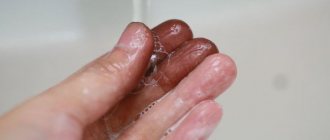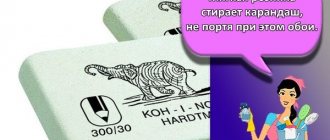Everyone has had to observe how, when getting out of the car, when taking off clothes, a spark jumps between the body and objects and a tingling sensation is felt. Thus, static electricity manifests itself, caused by the accumulation of opposite charges on items of clothing. The size of the spark can be quite large, and the electric shocks can be noticeable and unpleasant. The fact is that the potential difference (voltage) on clothing reaches several thousand volts. Let this figure not scare anyone - the current power is negligible and static cannot cause any harm other than small pricks in the finger. It’s another matter when the discharge occurs at a gas station. At a certain concentration of gasoline or gas vapor, the mixture can ignite from the slightest spark. You can watch the refueling tank. A metal chain runs down the back of the car to remove static charge when the metal rubs against the ground.
Causes of static electricity
Many people remember school experiments in physics, when, after rubbing a plastic rod with a woolen cloth, these things became electrified and could cause a spark and attract small objects. The same principle of static accumulation occurs when wearing clothes. Things made from natural materials (silk, wool) are often and strongly electrified when in contact with completely synthetic fabrics.
From the same physics it is known that water conducts electricity well, so damp clothes never become electrified. This does not happen in wet weather either. Moisture on clothing and in the air causes charges to be distributed evenly throughout all items, without causing a build-up of static electricity.
Things are most electrified in dry weather, especially in winter when there is severe frost. All lovers of natural fur coats know this after traveling in a car with synthetic seat upholstery.
Long-term solution against electrification of blankets and bedspreads
Friction creates an electrical charge, which can cause clothing to crack when touched. It accumulates faster in winter than in summer. This is due to low humidity.
Statistical electricity is to a large extent one of the types of environmental pollution that appears during the production of various equipment and other products.
You can solve the problem with ordinary water and a spray gun, but the effect will not last long.
Hairspray is designed not only to fix the hairstyle, but also to combat static electricity. Therefore, its use will allow you to keep your hairstyle unchanged.
Why and how to remove static from clothes
Static tension must and can be combated successfully. Sparks and tingling are not all problems. Electrified things stick to the body and attract dust. A good way to remove static electricity from clothes is to use special antistatic sprays. The substances contained in the spray prevent electricity from forming on tissues, evenly distributing opposite charges. The spray is applied in advance, three to four hours before going out, and it will do its job until the next wash. To avoid the risk of stains, spray antistatic agent onto the lining of your clothing. You cannot spray several wardrobe items at the same time! You can get the exact opposite effect.
Not everyone can use this method. Alcohol-based substances have a persistent, strong and unpleasant odor, and water-based ones can cause allergic reactions in people prone to this.
Luckily, there are home methods to avoid electricity buildup.
Traditional methods
Removing static and eliminating the accumulation of electricity without using chemicals is not a problem.
You can prevent charge accumulation by fulfilling the following conditions:
- Do not wear synthetic clothing. Natural materials do not collect static when rubbing against each other. Polyester in fabric composition is very highly electrified;
- Wear shoes with leather soles. Leather, unlike rubber, always has some moisture and allows accumulated charges to flow to the ground.
Only fabric that can conduct electric current is not electrified, that is, wet or containing a metallized thread - Lurex. All others are capable of accumulating charge to a greater or lesser extent.
The main enemy of static is moisture and metal. So, to rid yourself of unpleasant sensations, you can do the following:
- If the dress becomes electrified and begins to stick to your legs and arms, then before putting it on or tights, apply a moisturizing lotion or cream to your body. Wet skin will prevent the charge from accumulating;
- Run wet hands over clothing. Of course, be aware that some fabrics may stain;
- An ordinary safety pin will help remove static from clothes. Pin it to the inside of the robe. There is no mysticism here, the pin removes the charge and prevents it from accumulating. The main thing is to know how and where to attach it. It's not just about the metal. Keys to a car or apartment, change in pockets are also metal, but they have no effect. The pin on the clothing should ensure contact with the skin or other item of clothing, from friction with which electricity accumulates. A convenient place is the seam on the inside of the collar in the area where the product tag is attached. There it is invisible and there is contact with the neck.
- To get rid of static for a long time, wash clothes with the addition of fabric softener or fabric softener;
- If there is no conditioner, when washing things, add a quarter cup of baking soda or 50 ml of table vinegar. Add vinegar at the end of washing before rinsing;
- In extreme cases, a folk method such as spraying hairspray on the lining of outerwear will help. You need to spray from a distance of at least 30 cm and wait until it dries!
Alternative options
It is not always wise to buy ready-made industrial antistatic agents. But they can easily be replaced by available home remedies, which, moreover, will help out in a situation where you were using air conditioning, but it ran out at the most inopportune moment.
What will help cope with static at home? Here are some of the most popular products that can replace antistatic agents:
- vinegar;
- soap;
- soda;
- water;
- salt;
- lemon;
- fabric softener;
- hair conditioner;
- cream (for example, for hands).
Such products not only have antistatic properties, but also practically do not harm health. And, importantly, they help you save on the purchase of industrial antistatic compounds.
Almost all of the listed home remedies are in the arsenal of any housewife, which allows you to quickly find a suitable home antistatic solution to save a date, a walk, a business meeting or a party.
Vinegar
This is one of the most versatile housewife's assistants. It cleans, washes, softens. After treating with vinegar, the clothes will become soft, retain their bright color and attractiveness, and excess soap will be washed out of them, which will not come into contact with the skin. The thing will stop sticking and throwing sparks.
Here's how to use vinegar:
- Mix 6 parts vinegar with one part baking soda. Add the resulting mixture to water and use it for rinsing clothes.
- Add conditioner. Mix vinegar, conditioner and water in a ratio of 3x2x6. Half a glass of this mixture is enough to remove residual electricity and rid the product of an unpleasant odor.
You can also use vinegar antistatic to treat carpeting. They will become softer and fresher.
Efficiency
8
Duration of action
7
Availability of the method
8
We recommend: Features of Desmokol glue and rules for its use
Soap
Bar soap is used as an antistatic agent. Liquid will not work for this purpose for obvious reasons: it will wet the fabric thoroughly and leave unsightly marks. Using a dry bar of soap, rub the item evenly from the wrong side. It is important here to ensure that excess does not bleed onto the front side of the product, especially if it is made of thin, delicate fabric.
If in doubt, it is advisable to try rubbing a small area of your skirt or trousers first. If the soap does not appear on your face, you can safely continue. The effect of such treatment can last up to a day.
Efficiency
7
Duration of action
5
Availability of the method
9
Water
Instead of an antistatic agent, water can be used in different ways, in its pure form or with various additives:
- Water in the sprayer. You just need to spray water on the back surface of the product. It is important not to overdo it - not to fill it to the point where drops begin to flow. This method will not save you for a long time, but it can be used as an emergency measure. Its main advantage is its simplicity and accessibility: water can be found almost anywhere. As a last resort, if you don’t have a spray bottle at hand, you can simply wet your hands and rub the moisture over the fabric or body. The disadvantage of this method is that it cannot always be used in the cold season.
- Water with salt. This composition is used when rinsing clothes. To achieve a good effect, just add a teaspoon of salt to 10 liters of water. But you can get by with a simpler and faster option: pour a little solution into a spray bottle and treat sticky clothes from the inside out. Salt copes well with accumulated electricity.
- Water and lemon. Lemon contains acid, so its effect is much like that of vinegar. You need to add a few drops of lemon juice to water and spray the resulting solution onto the electrifying fabric. At the same time, you will make your favorite item softer and refresh the aroma.
- Water and fabric conditioner. This composition is also used with a spray. Very little air conditioning is used here, so you should not be afraid of a sharp, concentrated odor. It is necessary to take the components in the following proportion: 10 parts water to 2 parts softener. Water conditioner can also be used on synthetic carpets.
Efficiency
5
Duration of action
3
Availability of the method
10
Other improvised means
It often happens that there is no time to fully process the product, especially for washing and rinsing. If we are talking about an emergency, unplanned exit, for which we did not have time to prepare or think through the outfit, we often opt for synthetics: it does not need to be ironed and put in order for a long time.
If you think a little, for such cases you can also choose an “ambulance”: use something as an antistatic agent that does not require mixing, soaking, or drying.
We recommend: Remembering “grandmother’s” safe dishwashing detergents
For example, try hairspray. It may seem strange that a sticky substance is used as an anti-stick agent. But the adhesive properties of hairspray only appear when it is wet. Therefore, if you don’t have anything more suitable at hand, and time is running out, you can safely spray your favorite dress from the inside out. And while this “antistatic” hardens, start collecting. When the varnish dries, there will be no trace left of the accumulated static electricity.
Efficiency
6
Duration of action
6
Availability of the method
5
After drying, the varnish will remain on the product in an even layer. Unfortunately, it does not evaporate, like, for example, chlorine vapor. And this, of course, is a minus. Because very soon, if you continue to wear the treated product, this layer will cease to be protective and will begin to attract dirt. Therefore, after an emergency exit, it is highly recommended to wash the “varnished” item. Now you will have time to take care of proper rinsing.
On the cosmetic shelf there is another product with antistatic properties - cream. For hands or face - it doesn’t matter. After all, it doesn’t really matter what substances it contains other than fats. How to use it? It’s clear that you can’t put cream on your clothes. You need to lubricate the areas of the skin that come into contact with it. The fats from the cream will create a thin protective film that will prevent friction of the material on bare skin. Accordingly, such clothes will not “throw sparks.”
The advantage of this method is that a small tube of cream can always be placed in a lady’s handbag without any problems. But there is also a big disadvantage: the method is only suitable for the warm season, when there is no need to wear tights. Because applying cream to them is inconvenient, unhygienic and impractical. How will a woman feel in oiled tights?
Efficiency
5
Duration of action
4
Availability of the method
6
How to rid yourself of painful electric shocks
If all the measures taken did not bring success or they forgot to do something in a hurry and the clothes are electrocuted, then there are ways to painlessly remove the excess charge:
- Wearing mittens on your hands will reduce or eliminate the pain from the spark. As a last resort, pick up a coin and touch a metal object to relieve tension. On a note! The back of the hand has less sensitivity than the fingertips.
- When getting out of the car, you first need to grab the metal parts of the car body with your hand, and then put your foot on the ground. The accumulated charge will flow painlessly to the ground through the sole of the shoe. When the car is at a gas station, passengers should not be allowed to get out of the car, especially if they are wearing natural fur coats.
- An antistatic agent applied to the upholstery of a car will not harm even allergy sufferers, since there is practically no contact with bare skin. There are special antistatic wipes for car interiors on sale.
- Store clothes in the closet on metal hangers.
- Some people talk about the benefits of cotton insoles in shoes.
- Periodically spray your carpet or rug with fabric softener using a hand-held sprayer. Don't forget to wait for it to dry!
- If there is a dryer in the house and the clothes are dried in it, then three to four minutes before the end of the process you need to reduce the temperature to the minimum value and put a damp cloth inside the machine. Humidified air inside will prevent the formation of static electricity.
- Use a humidifier in your apartment. This is important during the heating season. At this time, air humidity is greatly reduced due to central heating.











